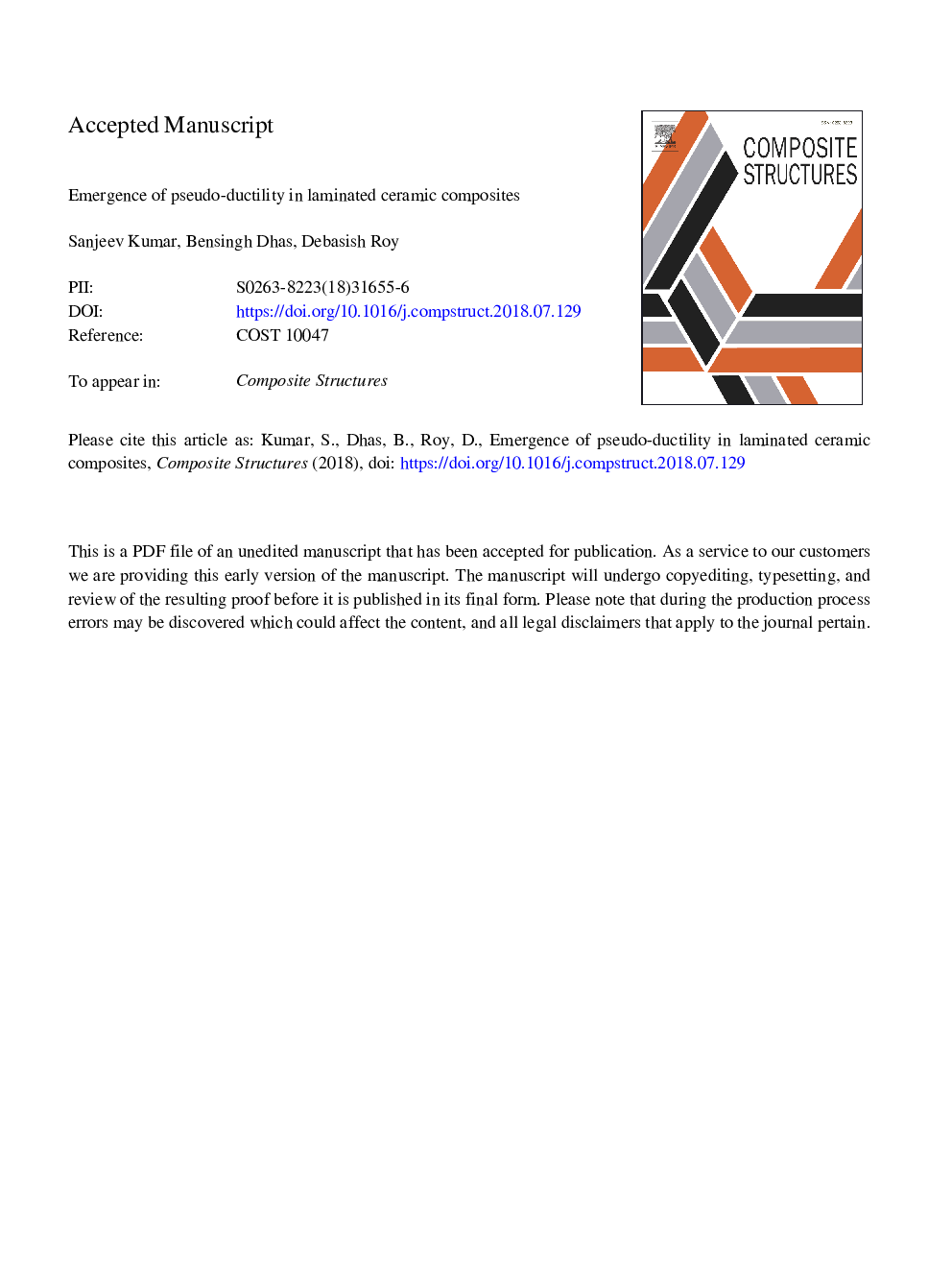| Article ID | Journal | Published Year | Pages | File Type |
|---|---|---|---|---|
| 6702779 | Composite Structures | 2018 | 26 Pages |
Abstract
In this article, we explore the origins of pseudo-ductility in the inelastic response of laminated ceramic composites. By pseudo-ductility, we mean the engineered ductility of ceramic laminated composites by a strategic placement of the weak interfaces. For purposes of modeling, a phase field based brittle fracture approach is adopted and we use it to numerically study the response of such composites. This approach has the advantage of seamlessly modeling the growth of cracks through the interface as well as into the lamina. A finite element implementation of this brittle fracture model is carried out, using which the response of laminated ceramics is computed and compared with available experimental evidence in the literature. This implementation is also used to study the influence of geometric and material properties on the response, especially the damage propagation through ceramic laminates. Along with important geometric aspects such as the lamina thickness distribution and interface geometry, we also study how material properties like Young's modulus and critical energy release rate of the interface may play a role in the engineered pseudo-ductility.
Related Topics
Physical Sciences and Engineering
Engineering
Civil and Structural Engineering
Authors
Sanjeev Kumar, Bensingh Dhas, Debasish Roy,
